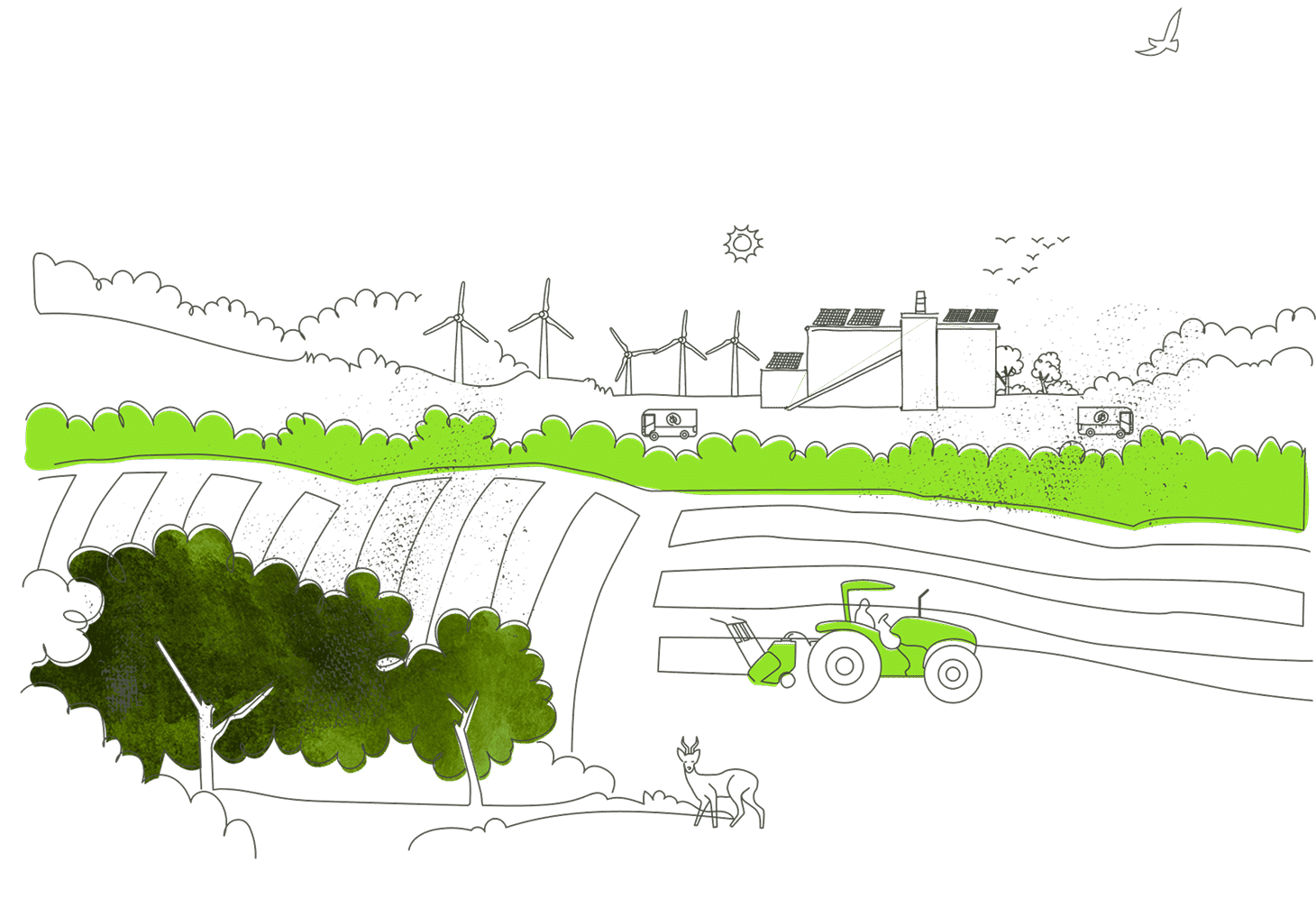Engineered Carbon Removal

Enhanced rock weathering
You can be forgiven for thinking ‘enhanced rock weathering’ sounds a bit dull, but this technique packs serious punch.
Basalt, a commonly available igneous rock, has naturally sequestered atmospheric carbon for millennia. Rainfall contains carbon (in the form of carbonic acid) and when it rains, the carbonic acid reacts with basalt rocks. The reaction creates a bicarbonate that is washed through river systems and stored in oceans for hundreds of thousands of years. Rock weathering is responsible for about 10 gigatonnes of natural carbon removal from our ecosystem every year.
‘Enhanced’ rock weathering mimics nature by simply accelerating this process. Using a natural by-product from local basalt quarries, we work with farmers to spread finely crushed basalt rock dust onto arable crop land. The crushed rock dust sequesters carbon much faster and also supports crop production. Basalt dust is a cheaper alternative to lime and reduces the need for expensive fertilisers, reducing chemical pollution. Basalt also improves soil alkalinity and increases crop yields, protecting UK food security and safeguarding harvests for generations to come.
Nothing dull about that.

There are tonnes of reasons to advance enhanced rock weathering. Two billion to be precise.
Carbon removal is vital to combat the effects of climate change. Nothing else will do. Enhanced rock weathering has the potential to remove approximately 2,000,000,000 tonnes of carbon per year.
Our UK project is a small part of this, but silicate rocks are commonly available all over the world. We want to show how enhanced rock weathering can be done well, then share our learning and experiences with others to launch their own projects.
So, that’s 2,000,000,002 reasons.


